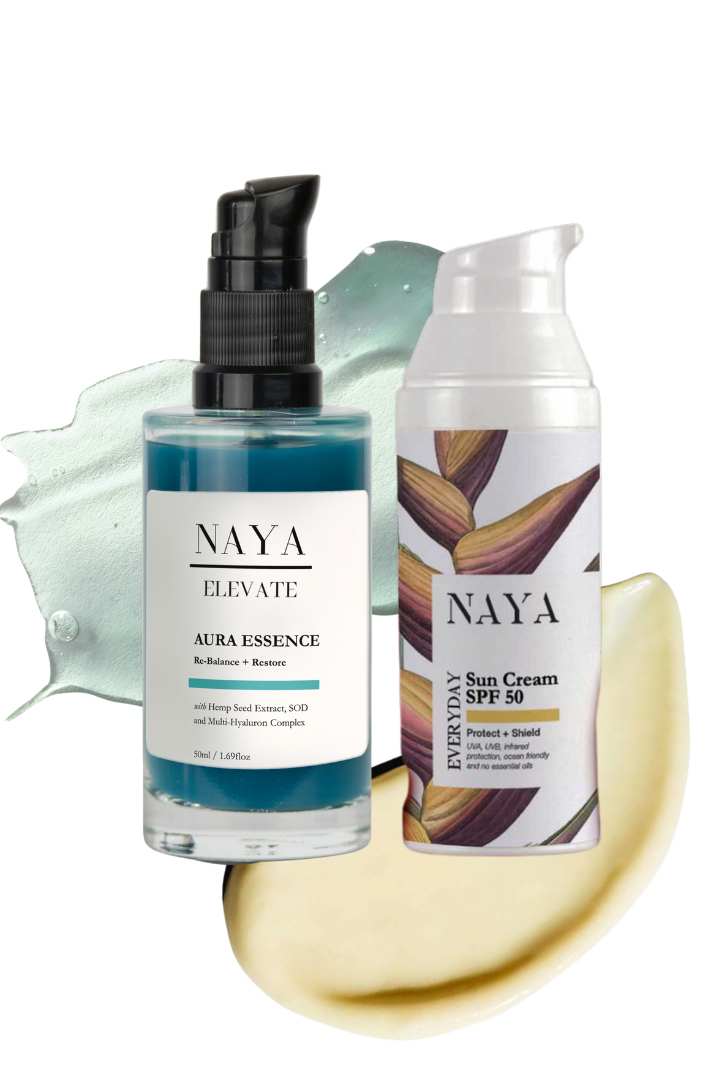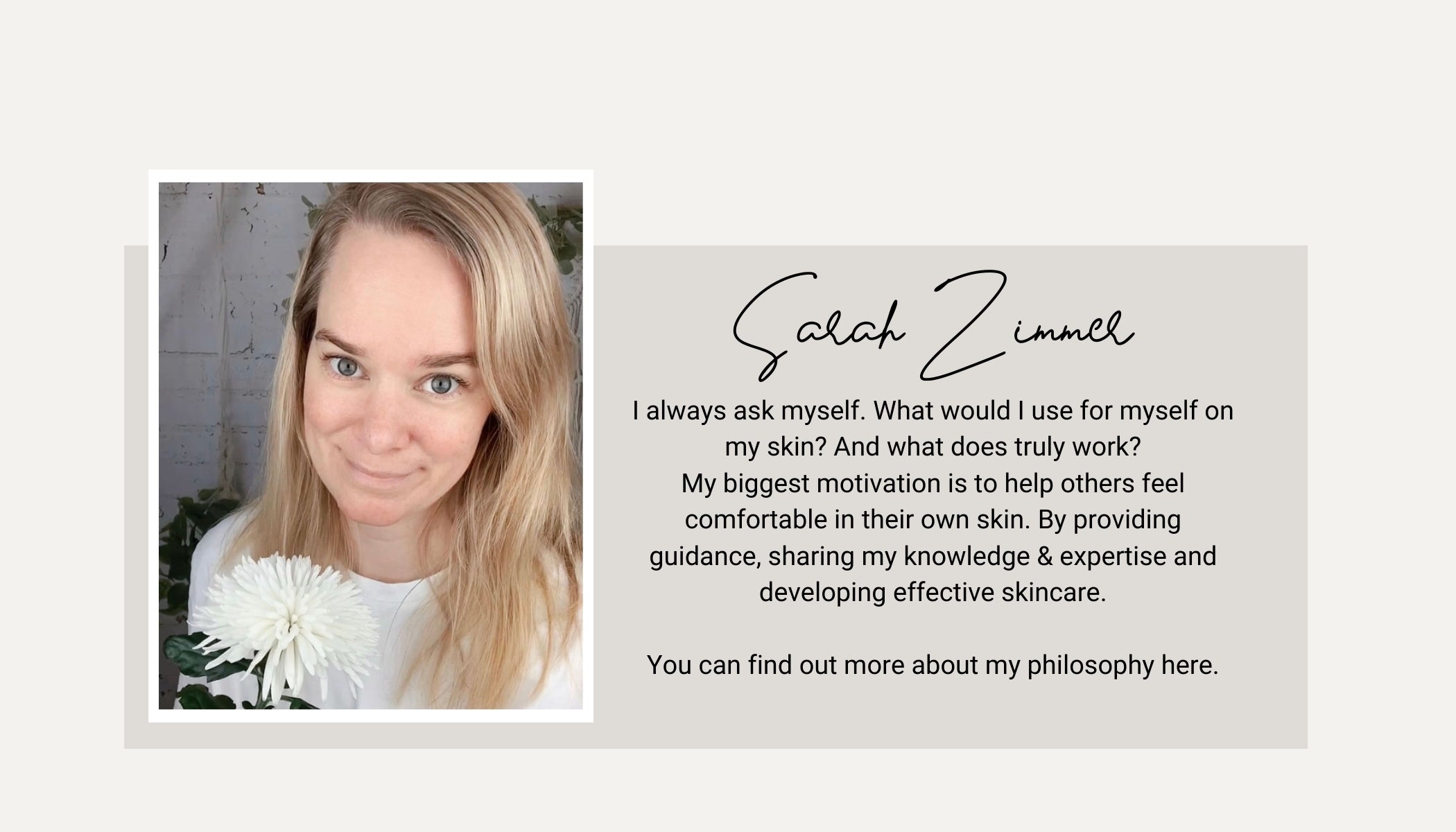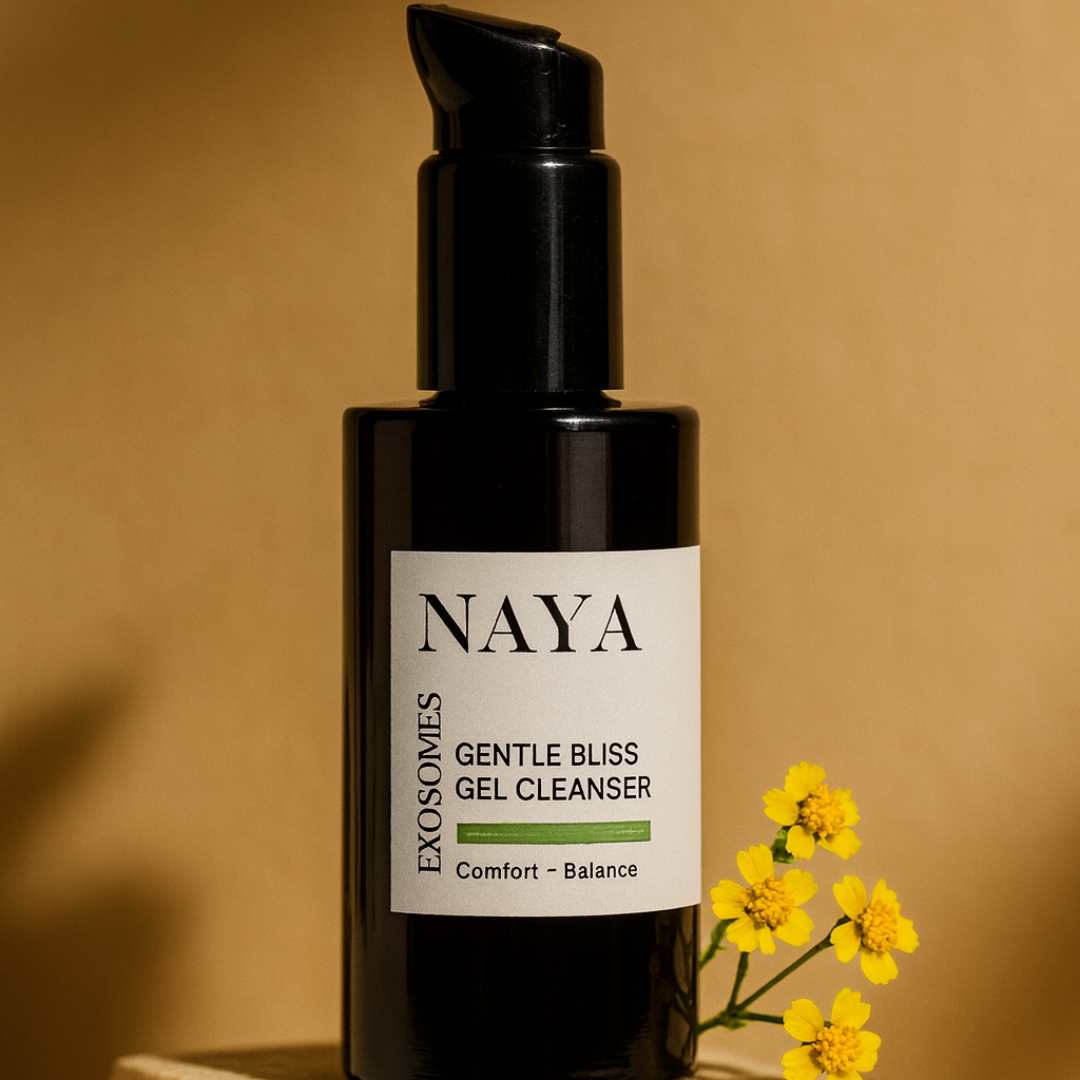Hormones & Skin: Understanding Your Cycle with NAYA
Hormones and our Skin
Perhaps you have already noticed it yourself: Your skin looks different depending on the phase of your cycle, is sometimes more, sometimes less sensitive, reacts with impurities or dryness. Such fluctuations have nothing to do with the products, but with the various hormones that regulate the entire processes of your body along with your cycle.
And this includes our largest organ: the skin.
But how exactly can the cycle affect the skin? How does the skin change in the course of the cycle? And most importantly, what kind of care will help you meet the different needs of your skin during the phases of your cycle?
That's what we'll explain in this article. We will look at the following:
- First things first: The basic rules of skin care
- Know how: Your skin throughout the cycle
- Cycle phase 1: Menstrual phase
- Cycle phase 2: Follicular phase
- Cycle phase 3: Ovulation phase
- Cycle phase 4: Luteal phase
- The skin in the course of the cycle - Observe your needs
No.1 First things first: The Basic Rules of Skincare
If you already know NAYA, you know: Skincare is a holistic affair. It's not only about the right care, but also about a balanced lifestyle. There is not one single miracle-all-in-one kind of product solves all skin problems. It all depends on your skin need and what you require in a given moment.
So take a look in your bathroom cabinet and take a close look at the ingredients. Because: There is often more bad in skincare than meets the eye. A cleansing gel or foam, for example, can irritate your skin with aggressive surfactants, dry it out severely and thus attack your entire skin protection barrier. Paraffins, parabens, silicones, microplastics and bad alcohols should ideally have no place in your bathroom, let alone on your skin. So look carefully and do your research. If you're a little lost when it comes to all the INCI names, a look at our guide to skincare ingredients is worth your time.

No 2. HOW TO KNOW: YOUR SKIN DURING THE CYCLE
Cycle phase 1: Menstrual phase (approx. day 1 to day 5)
Skin experiences:
- Lack of hydration
Products: (in order of usage)
- Hydration Mask
- Aura Essence
- Everyday Day Cream
- Cacay Beauty Oil or Everyday Face Oil
During menstruation, our hormones are virtually at rock bottom. The skin works a little slower, the metabolism shuts down. What does this mean in concrete terms? It looks drier than usual, the complexion looks rather dull and sallow. Depending on your disposition, your skin may also be more sensitive than usual during this time. Take extra care of yourself and your skin then. To give your skin the moisture it needs, you can apply the Aura Essence in the morning and in the evening after cleansing. Hyaluron has the wonderful property of penetrating deep into the skin and binding moisture there. It is therefore ideal for counteracting dryness and making your complexion radiant again. Hydraton mask is ideal for a break in between and also has a gentle peel effect. Then use the Everyday Day Cream following the Aura Essence to protect your skin and provide additional actives to strenghtening your skin barrier. Aura Essence also helps to balance your microbiome which is essential for a healthy and strong skin barrier. Combine this with the Cacay Beauty Oil or Everyday Face Oil. It also gives you an extra little glow during this time.
By the way, the last tip is always worth its weight in gold, regardless of your cycle, especially when it comes to cleansing your face. Cleansing oil gently but thoroughly removes debris, sebum and all the dirt of the day. So you can use it throughout this time, in each phase.
Cycle phase 2: Follicular phase (approx. day 6 to day 12)
Skin experiences:
- Dull and lack of glow
Products:
- Antioxidant Defence Booster
- Everyday Glow Serum
- Renew Cacay Oil + A
The oestrogen level slowly rises again. This means that the metabolism is finally speeding up and the skin regenerates more quickly. This is the ideal time to support the skin in its renewal process. The best way to do this is with gentle peels like Phytic Acid, BHA and also Retinol at 0.3% which makes it also suitable for sensitive skin. The BHA peel gently exfoliates, moisturises, provides noticeably more elasticity and stimulates collagen production and Retinol supports the regeneration process. This means fresh, plump and radiant skin!
Cycle phase 3: Ovulation phase (approx. day 13 to day 18)
Skin experiences:
- The skin feels and looks in balance
Products:
- Aura Essence
- Everyday Glow Serum
- Everyday Day Cream
- Everyday Face Oil / Cacay Beauty oil
Peak oestrogen levels are reached. The skin seems to glow on its own and impurities are fewer or non-existent. The skin seems to be well moisturised. Now it's time to support the skin to strengthen the skin's protective barrier for the coming phase and take that beautiful, natural glow with you. With the Everyday Glow Serum, you have a daily companion that stimulates mitochondrias and evens out your complexion. To complement your care during the ovulation phase, Everyday Day Cream and Aura Essence are wonderful. Both contain a powerful combination of antioxidants that protect your skin from environmental free radicals that can otherwise cause cellular damage to the skin. Ideally you seal everything in with a Face Oil. This depends on the season and if you like an extra glow or tend to experience drier skin.

Cycle phase 4: Luteal phase (approx. day 19 to day 28)
Skin experiences:
- Increase of sebum production
- Blemishes
- Oily look/feel
Products:
- Hydration Mask
- Everyday Glow Serum
- Everyday Day Cream
- Renew Cacay Oil + A
The nightmare is on the horizon as the Testosterone levels rise. As a result, sebum production is being over-stimulated by the increase of Testosterone, which is the basis for pimples, blackheads and the like. The skin looks greasier, the pores appear larger as they become more clogged, which leads to blackheads. When these then become inflamed, pimples develop. Blemishes are not bad per se and are absolutely natural. So we shouldn't curse them, after all, they illustrate what our body does with all the hormones. Blemishes are nothing more than a sign that something is happening in the body and that needs to be explored. Taking care of blemishes is all about getting the inflammation under control and repairing the skin's protective barrier. You can use the Everyday Glow Serum in combination with the Renew Cacay Oil+A. In addition, you can apply the Hydration Mask to provide enough hydration to your skin. As it might also be that the skin is feeling slightly dehydrated in preparation of the next phase. What you should avoid at all costs when it comes to blemishes is irritating your skin with aggressive exfoliating brushes, salts or granules. This can only make your skin more sensitive and lead to even more inflammation. Fruit peels, like the BHA which you can find in willow bark, gently cleanse pores overnight. BHA has an anti-inflammatory effect, penetrates deep into the skin and gently rids it of debris, dead skin cells and dirt. This speeds up the healing process and curbs the development of new inflammations. It has an antimicrobial, anti-inflammatory and sebum-regulating effect.
No.3 THE SKIN THROUGHOUT THE CYCLE - OBSERVE YOUR NEEDS
It is important that you understand yourself and your body better. Our cycle affects not only our skin or even our internal processes, but also our mood, thought structure and how we perceive the world around us. Knowing which phase you are in gives you a better understanding of how you feel and experience yourself. And of course, it gives you the opportunity to give yourself exactly what you need right now. Whether that's skincare, habits, food or activities.
A great way to not only get to know your cycle, but to track it, is writing a Diary to capture all this information.
IN SUMMARY
Skin cycling is a relatively new term in the world of skincare, and it refers to the practice of adjusting your skincare routine according to your skin's needs at different times of the month. Just like how our bodies go through different hormonal changes throughout our menstrual cycle, our skin also experiences fluctuations that can impact its texture, hydration levels, and overall appearance.
Overall, skin cycling is a fascinating approach to skincare that highlights the importance of paying attention to our body's natural rhythms and adjusting our routines accordingly. By doing so, we can help to support our skin's natural functions and keep it looking healthy and radiant throughout the month.














Leave a comment